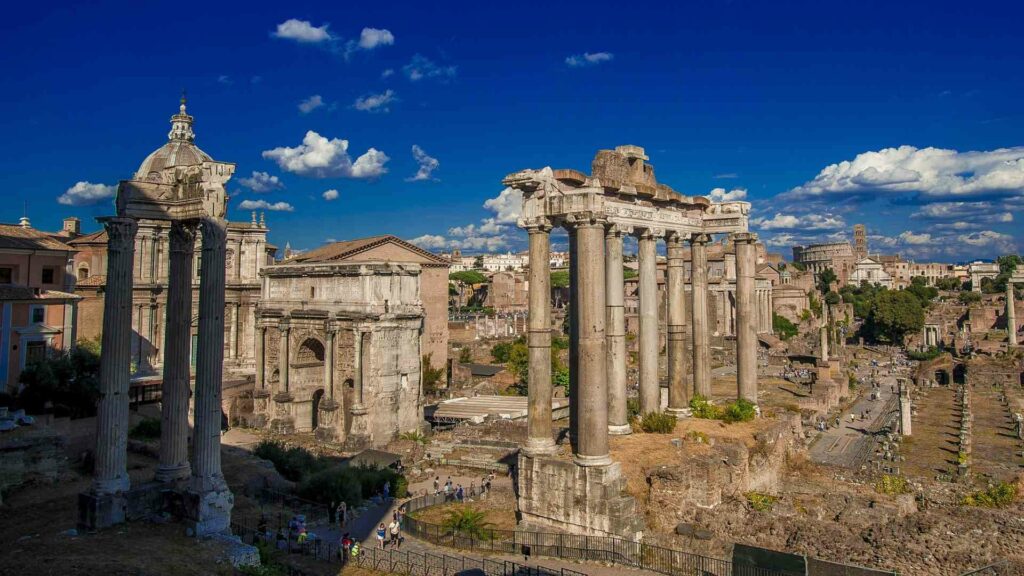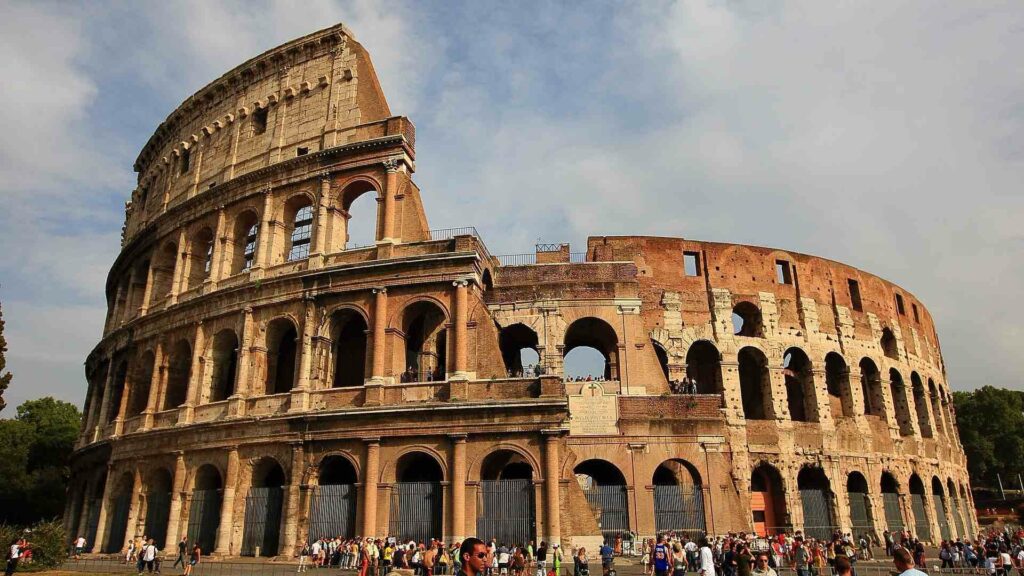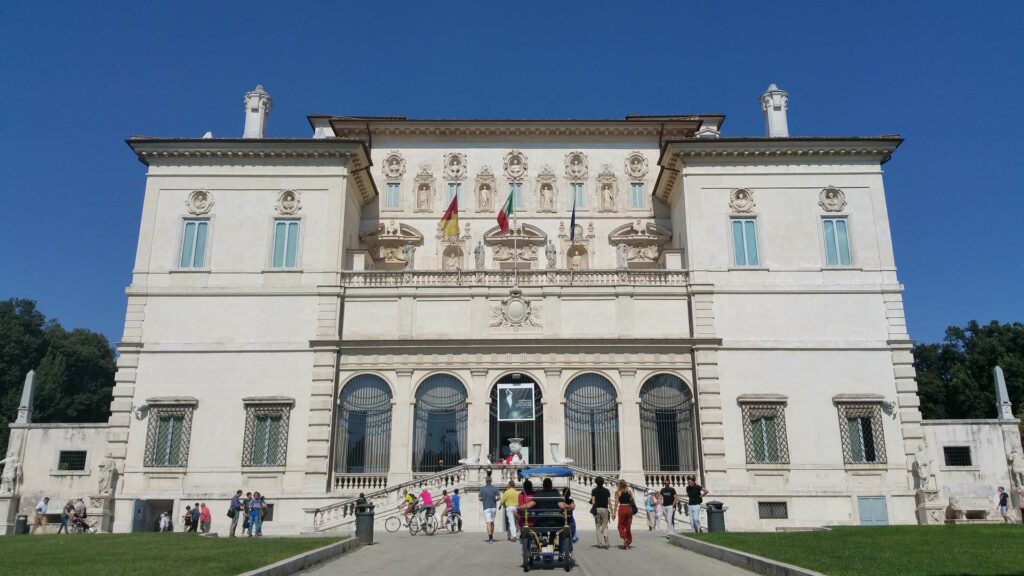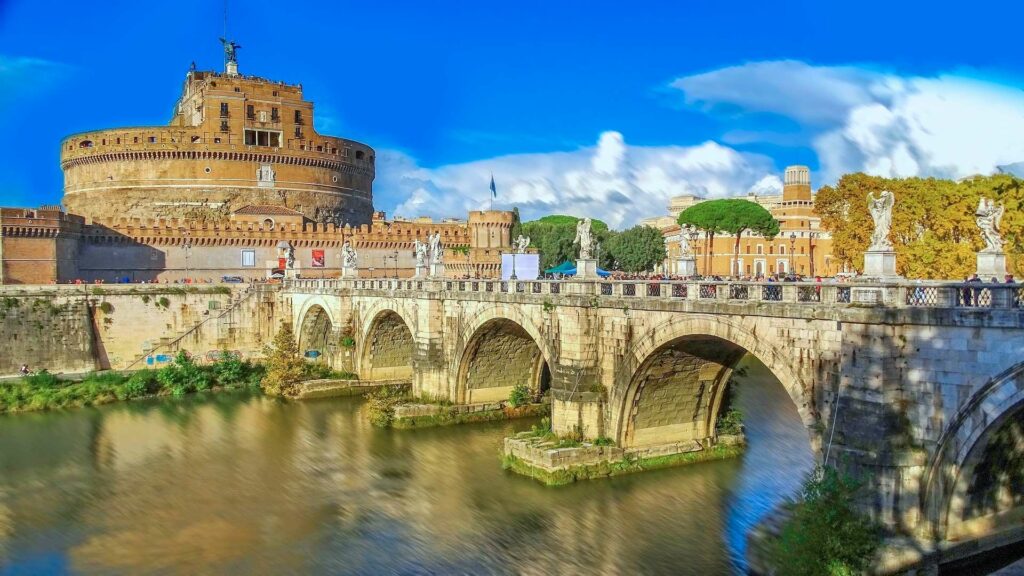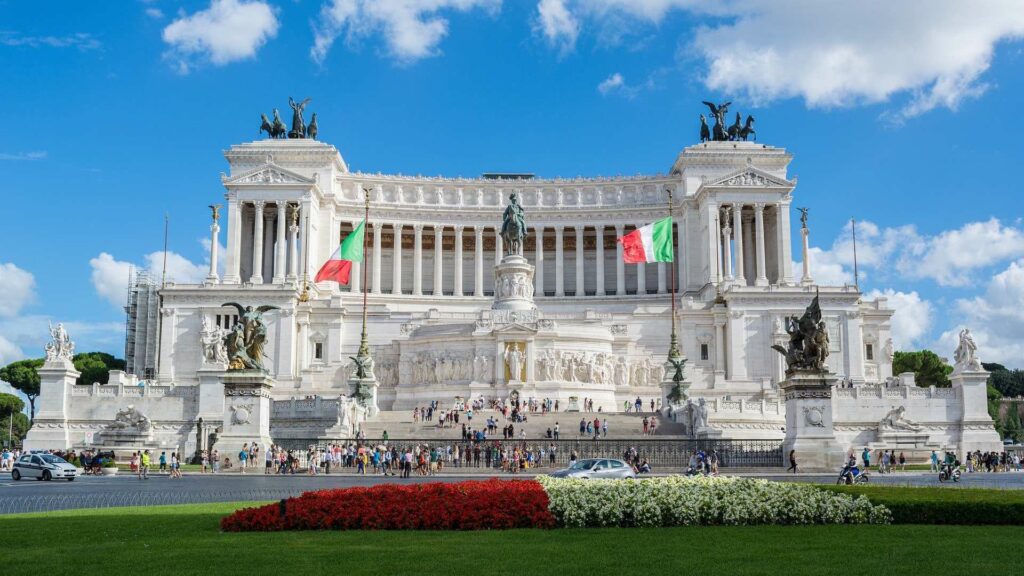Characterized by its majestic dome, that can be seen from many different locations in Rome, the Saint Peter’s basilica is the heart of Christianity and fundamental stop for every tourist, that can admire the splendid facade and the numerous and precious art pieces inside. The majesty of the Basilica and its evocative Colonnade that surrounds the square makes it unique.
The original Basilica dates back to 320 AD, commissioned by emperor Costantine in the supposed burial site of apostle Peter after his martyrdom.
During the centuries it was renovated and modified by famous artists commissioned by the many popes. The facade we see today dates back to the 1600s, built by architect Carlo Moderno.
The Dome
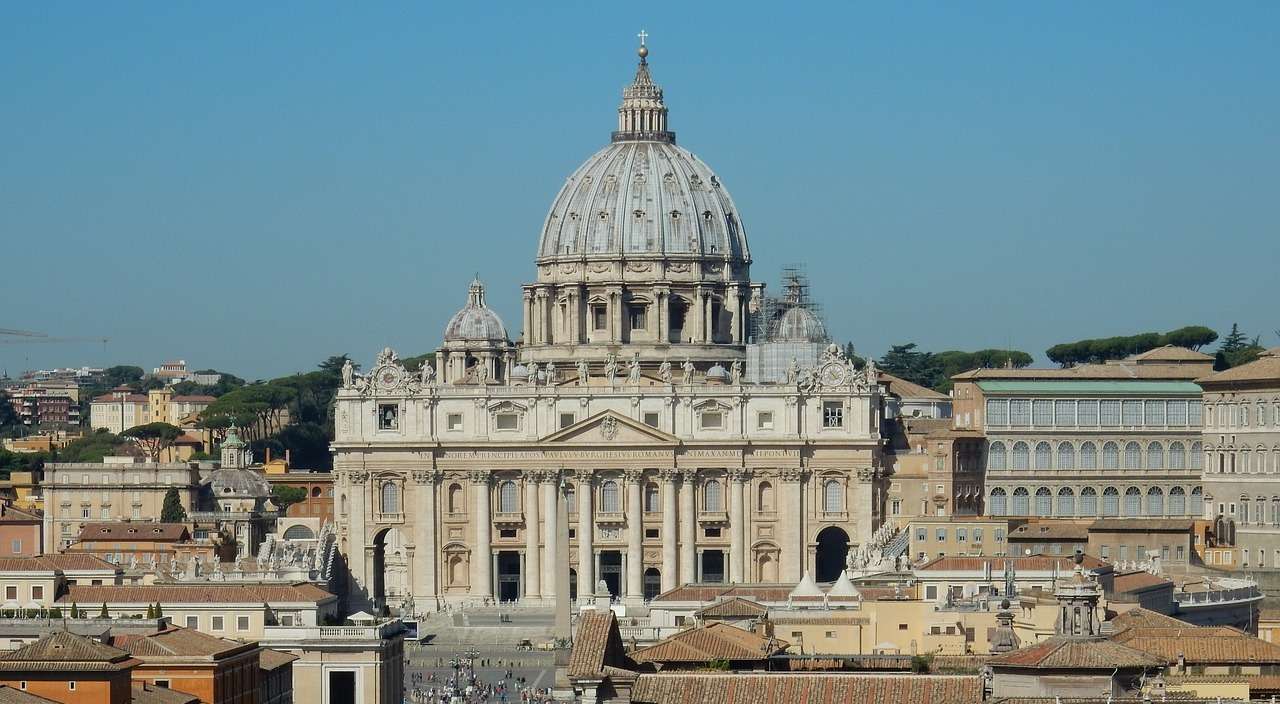
The Saint Peter’s dome was designed by Michelangelo around the middle of the 1500s and the works were finished, after his death in 1564, by Giacomo della Porta and Domenico Fontana. A lift takes you up to the roof where you can admire the enormous square and the panoramic view of the Eternal City. From here, a 330 step stair takes you to an internal corridor from where you can almost touch the mosaics of Giuseppe Cesari (also known as Cavalier D’Arpino) of 1605. The artist modified the former dome on which many architects have worked on, creating a slender and soft effect, but the subsequent modifications of the 1600s transformed it again.
Art treasures
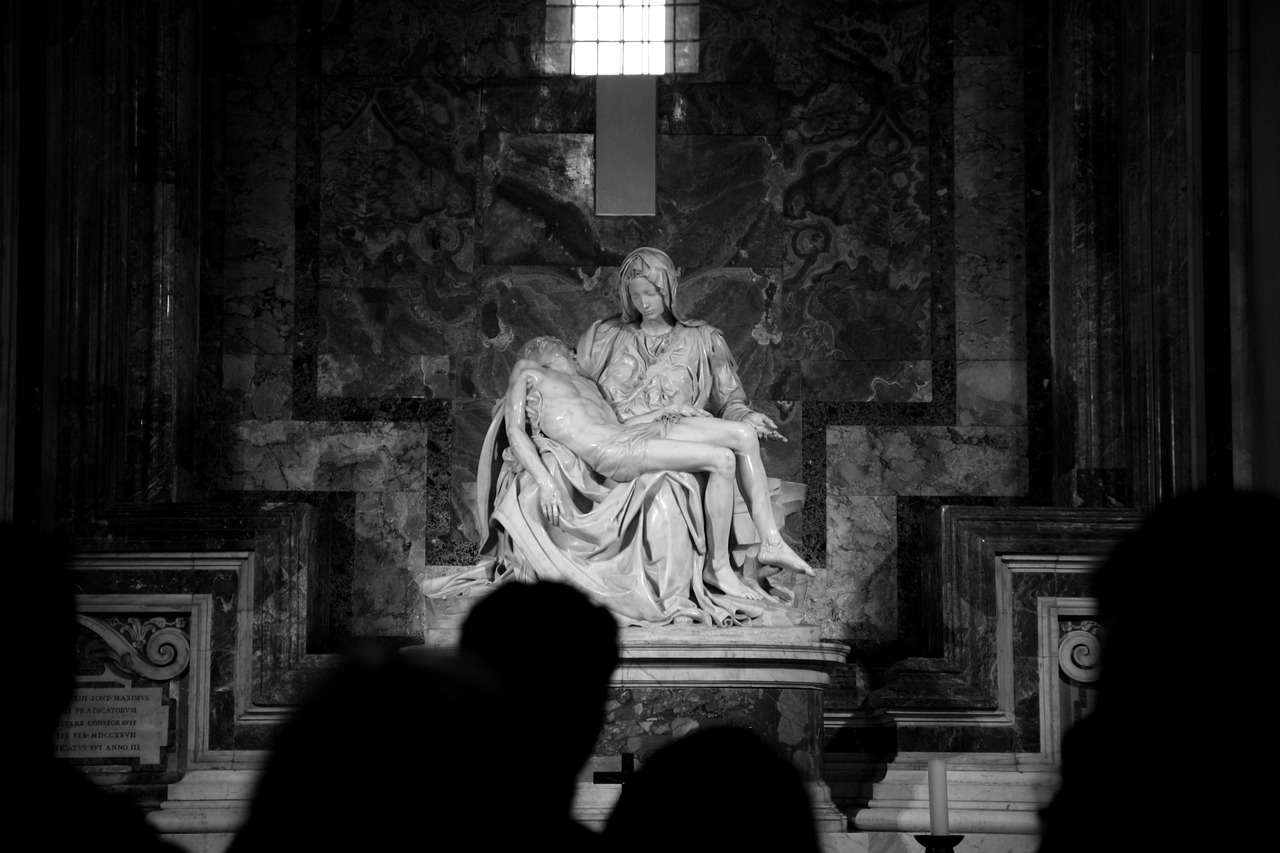
The astonishing marble sets of the Pietà (Pity), sculpted by Michelangelo Buonarroti, is a representative art piece of the Renaissance and it’s one of the most famous masterpieces in the world. It can be found in the first chapel of the right aisle, protected by an infrangible glass dome. Made of Carrara marble, the sculpture is put in a niche and the suggestive lighting surrounding it enchants the visitors.
The St. Peter’s Baldachin is a majestic and precious bronze structure, composed of four columns, put over the grave of St Peter and under the dome. Built back in the Baroque period, the Baldachin was made by Bernini as a ciborium, commissioned by pope Urban VIII Barberini.
Bernini also built the Colonnande, made between 1656 and 1667. The two crescents composing it represent the open arms of the Church. welcoming the devotees that gather in the square to listen to the Pope. Walking around the square you can admire a dynamic scenery and you can see some glimpses through the columns. At the center of the Colonnade, made of 284 columns and 88 pillars, you can find the Vatican obelisk wanted by Sixtus V.
Vatican Museums
The Vatican Museums are inside the State of the City of the Vatican and represent one of the biggest and most visited museums in the world. They include the Egyptian Gregorium Museum, the Etruscan Museum, the Pinacoteca (art gallery), the Chambers of Raphael and the fantastic Sistine Chapel. The many historical and artistic treasures found here are from the Egyptian times down to our times, and among them you could see the Laocoon complex and Apollo Belvedere.
To avoid the mile-long queues it’s recommended to book the tickets online.
The Sistine Chapel
The decorations on the walls of the Sistine Chapel date back to the 1400s and they were made by artists such as Botticelli, Perugino, Ghirlandaio, just to name a few. In 1508, pope Julius II della Rovere commissioned to Michelangelo to modify part of the decorations and the genius artist gave life to the magnificents frescos covering the ceiling and decoreated also part of the walls with lunettes. The Universal Judgement, always made by Michelangelo and commissioned by pope Clement VII de Medici, was made in 1533 and painted over the walls of the altair. The immensity of this art piece will leave you breathless.


